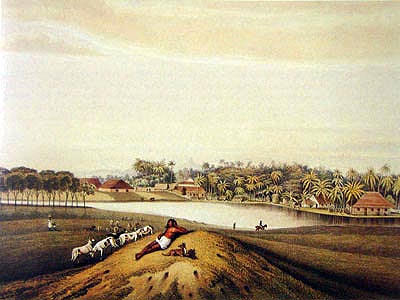
|
||||||||||||
|
| ||||||||||||
Colombo-2: Its Fashionable and Not so Fashionable PastBy Kishanie S. FernandoTo Colombo-2 is attributed some of Colombo's darker pages from the past of Sri Lanka's three colonial eras. Did you ever wonder how the lake of Colombo was named Beira? Or a certain spit of land became known as Slave Island? Where and what is Kew Garden? And how did the name Kompanni Veediya come into being? For the purpose of postal services Colombo-2 consists of Slave Island and Union Place. Slave Island is a suburb, located directly south of the Fort area of Colombo. Union Place is a suburb located approximately one kilometer south-east from the centre of Colombo, Fort. The Beira - The Ornament of the City
It is thought that the name ‘Beira’ may have derived from the name of ‘De Beer’, the Dutch engineer who constructed the moats, sluices and water defenses of Colombo. Apparently the name had only come into use from the early 20th Century. Previous to this it had been referred to as the Colombo Lake or simply the tank. John Deschamps an English officer of the Royal Artillery of British Ceylon in his reminiscences (published in 1845) describes the Lake of Colombo or the Beira as a ‘fine piece of water, supplied by several small tributary streams, and extending from the glacis of the Fort, four or five miles in a north easterly direction. It communicates, by means of canals, with the Kalany ganga, near the bridge of boats, and so with During the British administration the lake afforded the favorite and healthy recreation of boating in all its phases and was a great attraction of Colombo. An annual regatta was established, and we are told that on those occasions the lake put on a most gay and animated appearance, the number of yachts and sailing boats having considerably increased in consequence of the promotion of this truly English aquatic amusement. Nearly all the crafts were dressed in bunting and at night illuminated using colored lanterns. Such were the ‘picturesque vistas the Beira Lake offered when it was the ornament of the city’ says R.L. Brohier. It is also said that on its banks stood some of the most delightful residences. It is recorded the gentlemen who lived in villas by the lakeside used skiffs to go to their work places in Fort. Friends living in the Fort were frequently afforded pleasant recreation by invitation “to come across the lake to part take of a hospitable dinner at 4.00 o'clock under charming circumstances and salubrious conditions”. In the 1900s Henry W. Cave promoted the charms of the lake stating that it afforded several picture opportunities not to be missed by the amateur photographer. He wrote: The Story behind Slave IslandThe largest island on the Beira Lake was ‘Slave island’, a jagged peninsula unpleasantly named by the Dutch, because they kept their slaves there. It was also said that the Dutch stocked the lake with crocodiles to prevent their slaves escaping and these slaves were transported by boat across the Beira Lake for work to the Fort of Colombo and back to the island after their daily chores. It was the Portuguese who initially brought the slaves to the country around 1630. The slaves who were ‘Kaffirs’ from the Portuguese settlement of Goa were originally from the East coast of Africa around Mozambique. The Dutch during their rule, used them as domestic help and labor for agricultural ventures as well as for the building of the citadel of Colombo. With time and with the increase of the Kaffir population and strength they staged an insurrection in the citadel revolting against their employers and committing much violence and destruction to property. It is recorded that one of the Dutch East India Company Officials, the fiscal Barent Van der Swaan and his wife, were stabbed to death whilst asleep at night - by one of the slaves working in their bungalow.
Eventually the Kaffir insurrection was suppressed and the authorities decided that all the slave labor working in the citadel must be regimented. It was such an incident that prompted the Dutch to use the island to hold the slaves at night, depending on the crocodiles in the lake to prevent them from escaping. Here they spent the night in lines and shanties. During British rule in 1845 slavery was abolished. But for some mysterious reason the name Slave Island was retained. Much later John Deschamps, like most other Europeans of his time was highly taken up with the scenery of Slave Island and describes that the island or more properly the islet, pleasant and commodious, and some elegant residences, foremost amongst which stood “Kew” a fine house by the side of the lake, with spacious grounds, once forming a botanical garden and containing some beautiful trees and shrubs. The house was said to have been originally built by the Dutch for a masonic lodge, and but was appropriated as a residence of the Major General Commanding the forces, Sir John Wilson K.C.B. A Garden of Eden in Slave Island?It is forgotten history that some of the first modern botanic gardens of Sri Lanka began in Slave island. The first of these were introduced by the Dutch but abandoned after the British conquest. Thereafter in 1810, Sir Joseph Banks, president of the Royal Society opened the first British Botanic Gardens named Kew Gardens on seven acres of land in Slave Island with connections to the Royal Botanic Gardens also known as Kew Gardens in England. However it is reported that in 1813 these gardens were transferred to Kalutara due to flooding. Why Kompanni Veediya?
One of Sri Lanka’s foremost commercial ventures Ceylon Cold Stores began on the banks of the Beira Lake, under the name ‘The Colombo Ice Company’. Established in 1866 it imported and used the country’s first ice making machine. Subsequently the production of aerated water was introduced by a German engineer and the firm's manager Arthur Von Possner, who stamped it with the distinct and ever popular mark ‘Elephant brand’. The company went on to produce many more products and ventures building a cold storage for frozen products of all kinds, acquiring Ceylon Creameries Limited to produce and distribute reconstituted fresh milk and ice cream etc. Its premises down Glennie Street became known in Sinhala as ‘Ice Kompanniya’ (ice company), a name over the period that came to identify a whole area as ‘Kompanni Veediya’ meaning 'Company Street'. TodayToday Slave Island has nothing left of its once green past or its charming landscapes but is a very busy commercial area with its own railway station, restaurants, supermarkets, hospitals, corporate offices, government offices, religious places of worship and numerous shanties. The Kaffirs as a race are almost extinct except a small group heavily mixed living in the areas of Puttlam, Trincomalee and Batticaloa, distinct with their dark complexion, wooly curly hair and their unforgettable music and dance - the Kaffirina. The Kew Gardens is a phantom of the past. The Ceylon Cold Stores is part of John Keells Holdings Limited. Sadly much of the Beira Lake has been reclaimed. The lake which is said to have occupied approximately 165 hectares in the early 1900s has been reduced to less than 65 today. Further parts of the lake once picture perfect stand polluted and a sad sight, but yet of recent we see some hope in an attempt to resurrect the Beira and its environs to at least some of its past glory. I wonder if John Deschamps or H.W Cave would ever recognize these places today, which they took such delight in promoting to the visitor of Ceylon. Courtesy: Ceylon Today (Colombo) of Sunday, 26 February 2012
|
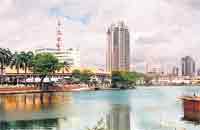
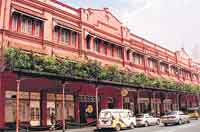
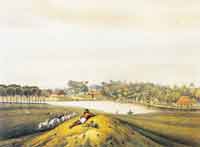
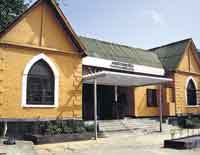
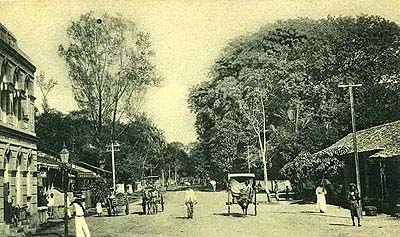 Negombo, northwards, with the lake of Bolgodde, the Pantura river, or estuary, and thus with Kalu ganga near Caltura, southwards; affording great facilities for internal communications, which might be most advantageously extended without much labour or expense’.
Negombo, northwards, with the lake of Bolgodde, the Pantura river, or estuary, and thus with Kalu ganga near Caltura, southwards; affording great facilities for internal communications, which might be most advantageously extended without much labour or expense’.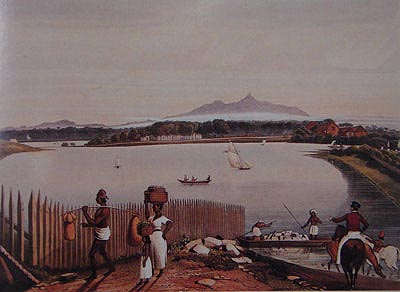 According to reports ‘the murderer a Kaffir servant had hidden under the bed sheet and when his master and mistress had turned into sleep had crawled out behind them and using a dagger with two unerring stabs sent them to eternity’.
According to reports ‘the murderer a Kaffir servant had hidden under the bed sheet and when his master and mistress had turned into sleep had crawled out behind them and using a dagger with two unerring stabs sent them to eternity’. 